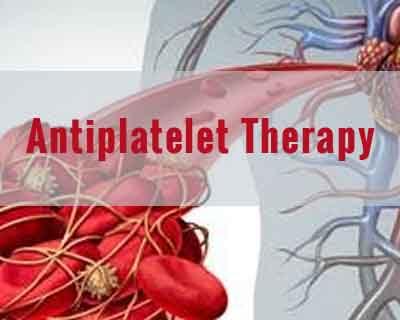- Home
- Editorial
- News
- Practice Guidelines
- Anesthesiology Guidelines
- Cancer Guidelines
- Cardiac Sciences Guidelines
- Critical Care Guidelines
- Dentistry Guidelines
- Dermatology Guidelines
- Diabetes and Endo Guidelines
- Diagnostics Guidelines
- ENT Guidelines
- Featured Practice Guidelines
- Gastroenterology Guidelines
- Geriatrics Guidelines
- Medicine Guidelines
- Nephrology Guidelines
- Neurosciences Guidelines
- Obs and Gynae Guidelines
- Ophthalmology Guidelines
- Orthopaedics Guidelines
- Paediatrics Guidelines
- Psychiatry Guidelines
- Pulmonology Guidelines
- Radiology Guidelines
- Surgery Guidelines
- Urology Guidelines
Ticagrelor monotherapy after 1 month of DAPT good enough after multivessel PCI: JACC

There is no absolute clarity on the duration of antiplatelet therapy after angioplasty in patients with multiple vessel disease. Moreover, the data on optimal antiplatelet treatment regimens in patients who undergo multivessel percutaneous coronary intervention (PCI) are sparse.
The most recent American College of Cardiology/American Heart Association guidelines on duration of dual antiplatelet therapy (DAPT) after percutaneous coronary intervention (PCI) with drug‐eluting stents (DESs) give a class I recommendation to continue DAPT for at least 12 months after an acute coronary syndrome (ACS) and at least 6 months after revascularization in the setting of stable ischemic heart disease.
But in a new study, the researchers have found that ticagrelor monotherapy after 1 month of DAPT leads to a favourable balance of bleeding and ischemic events in patients with multivessel PCI. The study has appeared in the Journal of the American College of Cardiology.
Dr Kuniaki Takahashi and colleagues conducted a post hoc study to investigate the impact of an experimental strategy (1-month dual antiplatelet therapy [DAPT] followed by 23-month ticagrelor monotherapy) versus a reference regimen (12-month DAPT followed by 12-month aspirin monotherapy) according to multivessel PCI.
The researchers in a GLOBAL LEADERS trial which is a prospective, multicenter, open-label, randomized controlled trial,allocated all-comer patients in a 1:1 ratio to either the experimental strategy or the reference regimen. The primary endpoint was the composite of all-cause death or new Q-wave myocardial infarction at 2 years. The secondary safety endpoint was Bleeding Academic Research Consortium type 3 or 5 bleeding.
It was found that among 15,845 patients, 22.4% with multivessel PCI had a significantly increased risk of bleeding and ischemic events at 2 years compared with those having single-vessel PCI. The combination of DAPT and ticagrelor significantly decreased the risk of the composite primary endpoint of all-cause death or new Q-wave myocardial infarction at 2 years. Risk of Bleeding Academic Research Consortium type 3 or 5 bleeding was similar between treatment groups.
The results of the study suggest that ticagrelor monotherapy after 1 month of DAPT leads to a favorable balance of bleeding and ischemic events in patients with multivessel PCI.
The researchers concluded that
long-term ticagrelor monotherapy following 1-month DAPT can favourably balance ischemic and bleeding risks in patients with multivessel PCI. These findings should be interpreted as hypothesis-generating and need to be replicated in future dedicated randomized trials and therefore further studies are needed.
For further reference log on to:
Journal of the American College of Cardiology
DAPTGLOBAL LEADERS trialgood enoughJACCmonotherapymultivessel PCIpercutaneous coronary interventionticagrelor
Source : Journal of the American College of CardiologyNext Story
NO DATA FOUND

Disclaimer: This site is primarily intended for healthcare professionals. Any content/information on this website does not replace the advice of medical and/or health professionals and should not be construed as medical/diagnostic advice/endorsement or prescription. Use of this site is subject to our terms of use, privacy policy, advertisement policy. © 2020 Minerva Medical Treatment Pvt Ltd